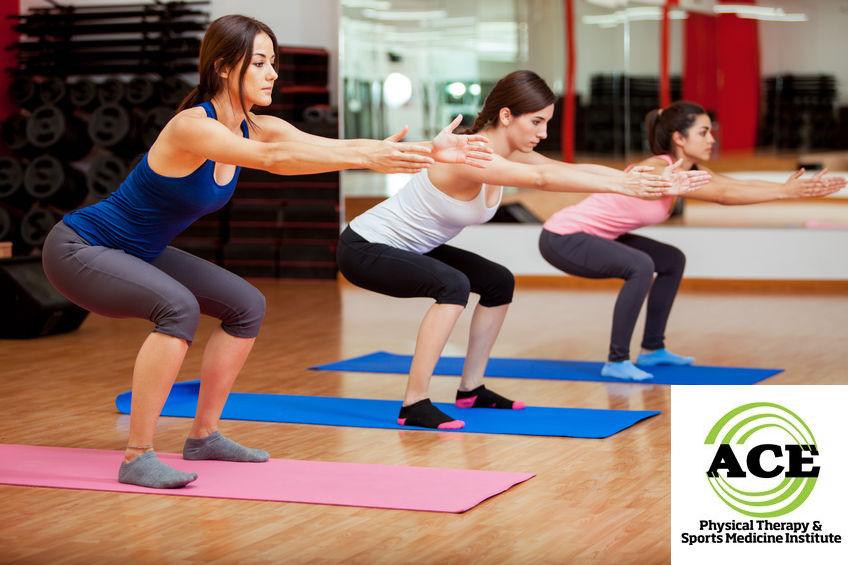ACL PREVENTION PROGRAMS AT HOME… DO THEY WORK?

Tid Bits of Info
- 1 in 20 collegiate level female athletes sustain an ACL injury.
- 1 in 50 high school level female athletes sustain an ACL injury.
- Preventing excessive knee valgus or hyperextension can prevent ACL injuries.
- Most patients that had an ACL reconstruction surgery performed develop osteoarthritis within 10 years.
- Seek the advice and treatment of a Physical Therapist that specializes in sports rehabilitation to learn preventative techniques and drills.
Athletes commonly suffer from Anterior Cruciate Ligament (ACL) injuries. All too often the ACL is torn when the athlete, more frequently a female, is not making contact with anyone or thing. The “non-contact” ACL injury is an injury that occurs to all ages and skill levels of athletes. Proper training can reduce the likelihood of ACL injuries, and healthcare professionals regularly assess different programs that might help to prevent them from occurring in the first place. While home prevention training sounds appealing, a supervised prevention program is more likely to help prevent injuries.
The ACL is a primary static stabilizing structure in the knee joint. It is located inside the joint and is designed to prevent anterior translation of the femur (thigh bone) on the tibia (shin bone). The ACL helps to prevent some rotation of the knee joint. When the ACL ruptures, the knee joint becomes very unstable. The joint will be more susceptible to “giving out” and the athlete is unable to continue playing their sport.
The goal of a prevention program is to help the athlete develop the physical attributes and athletic skills that will enable them to compete at a very high level but not experience an ACL injury. Healthcare professionals welcome any type of exercise and educational program that focuses on developing the proper physical attributes and skills that will make the knee joint more resilient and less susceptible to an ACL injury. Some professionals have attempted to have athletes perform the exercises and drills at home without supervision, and they have found that most do very little and at most approximately ½ of the desired amount.
ACL prevention programs are designed to facilitate the development of strength, balance, proprioception/kinesthetic awareness and proper jumping/landing techniques. The athlete must have the proper technique or they can cause an injury to occur and will most likely not get the most out of their workouts. There are attempts being made to develop “do it at home” programs via DVDs but the results have not been stellar. The compliance to perform the routine consistently is the primary problem with these programs. Lack of supervision leads to improper form and decreased positive results.
Too many athletes are not properly educated to the importance of a prevention program. They need to be taught proper form and technique and then given an explanation as to why they “need” to perform the exercises. There should not be an option to forgo the routine. If they are well educated to the reasoning behind the program, they will be more willing to participate faithfully. In most cases, an athlete will benefit greatly from a prevention program and one that is supervised by a qualified healthcare professional is almost guaranteed to be successful.
Physical Therapists that specialize in orthopaedic/sports rehabilitation are some of the best qualified healthcare professionals to administer the ACL prevention program. These specialists can teach proper exercises that will strengthen the entire musculoskeletal system and enhance neuromuscular activity which is one of the keys to balance, proprioception and kinesthetic awareness. With these basics, which are the foundation of the human movement, the Physical Therapist can teach the athlete proper sports skills and techniques including plyometric bounding and agility drills. Athletes that perform preventive programs are much less susceptible to an ACL injury due to the physical development and changes to their bodies following a properly performed preventive program.
The parameters for the program are relatively standard. The program should be performed 2-3 times per week and it can be completed within 20 minutes in many instances. The key to success is compliance and doing the routine properly. Performing drills incorrectly can be as bad as not performing them at all. The Physical Therapist can assess the athlete’s technique and make sure that they are getting the most out of their efforts.

























